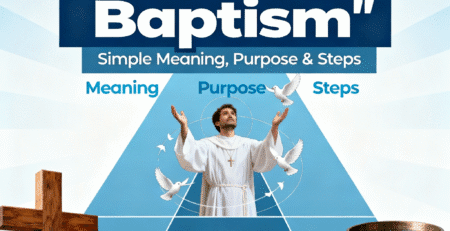A christening is more than a short ritual and a photo op – it’s a quiet hinge in many families’ stories, where faith, tradition, and personal choice meet. Ask different communities when that hinge should swing, and you’ll get a range of answers: a few weeks after birth, at the first convenient Sunday, at an age of conscious decision, or sometimes not at all. The question “What age does a child get christened?” opens a window onto history, theology, and the rhythms of everyday life.
This article will trace why ages vary across denominations and cultures, outline the common practices parents encounter, and explain how practical concerns – health, family availability, and religious instruction – frequently enough shape the timing. Whether you’re a parent weighing options, a curious friend, or someone exploring how rites of passage evolve, understanding the when and why of christening helps turn a ritual into a meaningful choice rather than a matter of habit.
Table of contents
- Between Tradition and Today: Typical Ages for a Christening
- Factors That Influence When Families Choose to Christen a Child
- Religious, Cultural , and Legal Considerations to Discuss with Your Church
- Practical Recommendations for Choosing the Right Age and Planning the Service
- Preparing the Child and Guests: Checklist, Etiquette, and Aftercare Tips
- Q&A
- The Way Forward
Between Tradition and Today: Typical Ages for a Christening
Across communities, the age at which a child is brought to be christened varies widely – from a few weeks old to school age and beyond. In many traditions, infant baptism remains common, often scheduled within the first few months to welcome the child into the faith and name them formally. Practicalities like parental leave, the availability of godparents, and church schedules often shape the date as much as theology does.
Modern choices have expanded the timeline: some families wait until a child can participate (or even choose for themselves), while others prefer an early rite to mark family continuity. Typical considerations include:
- Religious tradition – denser in some denominations than others;
- Family preference – grandparents, godparents, and relatives influence timing;
- Child involvement – older children may express assent or curiosity.
| Age Group | Common Practice | Why |
|---|---|---|
| 0-6 months | Infant baptism | Family tradition & early welcome |
| 1-3 years | Toddler ceremonies | More family flexibility, memorable photos |
| 4+ years / Adults | Child assent or adult baptism | Personal choice and understanding |
Factors That Influence When Families Choose to Christen a Child
Deciding when to christen a child often feels like balancing tradition with the practicalities of modern life. Some families follow strict denominational rhythms-Catholic parishes commonly baptize infants shortly after birth, while other traditions may encourage waiting until a child can personally profess faith. Practical concerns such as the baby’s health, the availability of godparents, and meaningful family dates (a grandparent’s birthday, a family reunion) frequently push the ceremony into a window that suits everyone emotionally and logistically.
| Factor | Typical timing |
|---|---|
| Denomination | Days to years |
| Health of the child | As soon as safe |
| Family schedule | Holidays or weekends |
| Personal preference | Infant to school-age |
- Religious rules: Some churches require infants to be baptized; others prioritize a later, conscious choice.
- Community expectations: In tight-knit communities, cultural norms can nudge families toward earlier or later ceremonies.
- Logistics and festivity: Coordinating godparents, family travel, and venue availability often determines the date more than theology does.
Ultimately, the timing is a personal decision shaped by faith, family, and circumstance-there is no single “right” age, only the moment that feels meaningful for those involved.
 Religious, Cultural, and Legal Considerations to Discuss with Your Church
Religious, Cultural, and Legal Considerations to Discuss with Your Church
Before you set a date, sit down with your minister or priest to map out both the spiritual meaning and the practicalities. Churches vary widely-some practice infant baptism as a covenant, others prefer a later believer’s baptism-so ask about doctrinal expectations, required preparatory classes, and the role of godparents or sponsors. Also, clarify cultural touches: will traditional prayers, family blessings, music, or a naming rite be included, and is there a dress code or photo policy for the service? These small decisions shape the ceremony and ensure it respects your family’s faith and heritage.
Don’t forget the legal side: find out whether the church issues an official certificate, whether civil registration is handled separately, and what identification or consent forms are required. Many congregations keep baptism registers that can be useful for school or community records, but the legal weight of those entries varies by country. The table below offers a swift look at common age categories and the questions to raise with your church.
- Infant (0-1): Family-led, sacramental emphasis, frequently enough, with minimal assent needed.
- Toddler (1-3): Practical considerations-sleep/feeding, symbolic participation options.
- Child (4+): Increasing opportunity for child’s understanding and consent; may require prep classes.
| Age Range | Typical Focus | Questions to Ask |
|---|---|---|
| 0-1 | Family covenant, tradition | Godparents, certificate, timing |
| 1-3 | Practical logistics | Service length, photo rules |
| 4+ | Child assent, teaching | Preparation, explanation level |
Practical Recommendations for Choosing the Right Age and Planning the Service
When deciding the best moment to welcome your child into the church, weigh both tradition and daily life: parish guidelines, family schedules, health, and the role you imagine for godparents all matter. Practical steps travel well when simple: confirm availability with your priest or minister early, consider seasonal gatherings (holidays can be joyful but busy), and think about the child’s temperament; a sleeping newborn, a curious toddler, or a school-age child each changes how the day unfolds.
- Check parish rules: some denominations have age preferences or required preparation.
- Book a few dates: give yourself alternatives in case of illness or scheduling conflicts.
- Choose godparents thoughtfully: they’ll be part of the ceremony and ongoing spiritual support.
- Plan timing: mid-morning frequently enough works best for children and photography.
A quick planning table can help you match age to logistics:
| Age Range | Typical Proposal | Planning Tip |
|---|---|---|
| Newborn (0-3 mo) | Traditional,family-centered | Book early; keep ceremony brief |
| Infant (3-12 mo) | Flexible timing | Choose a calm hour; arrange feedings |
| Toddler (1-3 yrs) | Kid-amiable ritual, shorter | Plan activities and quick photos |
| Child (4+ yrs) | include age-appropriate participation | Prepare them gently; consider classes |
Above all, prioritize what will make the day meaningful and manageable for your family: simplicity, clear interaction, and a flexible schedule will keep the focus on the spiritual milestone rather than stress. Whether you opt for a quiet chapel service or a larger celebration, practical planning-timing, paperwork, and a short run sheet ensure the ceremony becomes a warm memory rather than a logistical puzzle.
Preparing the Child and Guests: Checklist, Etiquette, and Aftercare Tips
Whether your little one is a newborn or a curious toddler, the day of the christening is as much about practical planning as it is about ceremony. Aim to schedule the service around the child’s usual nap and feeding times to reduce fussiness, and pack a small emergency kit (extra outfit, blanket, favorite toy). Remind godparents and close family to arrive a little early – not only out of politeness, but to ease transitions for a child who might be unsettled by a crowd. For older children, brief, calm explanations of what will happen and a trusted adult nearby for reassurance make the experience meaningful rather than overwhelming.
- Checklist: clean outfit, spare clothes, feeding supplies, tissues, and a comfort item.
- Etiquette for guests: arrive 15-20 minutes early, silence phones, follow the photographer and officiant’s instructions.
- Aftercare tips: quiet rest time after the ceremony, a gentle feed, and avoiding overstimulation with loud parties instantly afterward.
Use the quick reference table below to tailor preparations by age, then finalize plans with the officiant and godparents so roles are clear. A calm exit strategy – a quiet room or a short walk after photos – can transform a potentially stressful day into a treasured memory for the whole family.
| Age | Key Preparation |
|---|---|
| 0-6 months | Feed beforehand, swaddle, keep warm |
| 6-18 months | Bring distractions, an extra outfit, short photo window |
| 18 months-4 years | Simple explanation, favorite toy, quiet reward afterward |
Q&A
Q: What does “christened” mean – is it the same as baptism?
A: Frequently enough, yes. “Christening” is a common, slightly more informal word for the baptismal ceremony in many Christian traditions. It usually involves naming the child, sprinkling or immersing with water, and a prayer of welcome into the faith community. Exact practices and terminology vary by denomination.
Q: At what age do most children get christened?
A: There’s no single answer. In liturgical churches (Roman Catholic, Orthodox, Anglican/Episcopal), infants are commonly christened in the first weeks or months of life. In many protestant and evangelical churches, baptism is delayed until a child can make a personal profession of faith – often in childhood or adolescence. Some families choose a middle ground (toddler years) for cultural or practical reasons.
Q: Are there strict age rules in any churches?
A: Some traditions have guidelines rather than strict ages. Such as the Catholic Church encourages infant baptism ”quickly” but offers adapted rites for older children and adults, who receive preparatory catechesis. Baptists and many evangelical churches emphasize “believer’s baptism,” which means the person should be old enough to understand and confess faith. Exact ages are generally decided locally.
Q: Why would families choose to christen a baby early?
A: Reasons include religious conviction (baptism as entry into the church), family tradition, pastoral care, or practical timing (celebrating with relatives). For some, it’s seen as a spiritual safeguard or blessing soon after birth; for others, it marks a public commitment by the parents and godparents to raise the child within the faith.
Q: Why might a family wait until the child is older?
A: Waiting allows a child to participate consciously and make a personal commitment, which is critically important in traditions emphasizing believers’ baptism. It can also avoid future questions if parents’ beliefs or the child’s upbringing are uncertain. Some families opt for a naming ceremony or blessing early on, reserving baptism for when the child can choose.
Q: What age is considered old enough for a ”believer’s baptism”?
A: Practices vary widely. Some churches accept baptisms of children as young as 6-8 if they demonstrate understanding; others wait until adolescence. Ultimately, the determining factor is usually the child’s ability to articulate faith in Christ and understand the meaning of baptism, as judged by the local pastor or the church’s guidelines.
Q: Can a child be christened later if they weren’t as a baby?
A: Absolutely. Many churches offer baptism for children, teenagers, and adults who were not christened as infants. Older children often receive age-appropriate instruction or preparation before the rite.
Q: Do I need to have godparents? At what age should they be chosen?
A: Requirements depend on the denomination. In Catholic and Orthodox tradition, one or more godparents are typically required and should be baptized and practicing Christians. Choosing them is usually done by the parents well before the ceremony; godparents can be any age adults the family trusts to support the child’s faith development. Protestant churches may be more flexible, offering sponsors or mentors instead.
Q: Does a christening have legal status?
A: In most countries, christening or baptism is a religious sacrament and does not change civil status by itself. church registers often record the event, which can be useful for genealogical or denominational purposes, but civil birth registration and legal rights are handled separately by state authorities.
Q: What if my family has mixed religious beliefs – can we still christen our child?
A: Yes, many families with mixed beliefs choose to proceed. Churches typically welcome a child as long as at least one parent or guardian requests baptism and the church’s conditions are met (e.g., godparents, promises to raise the child in the faith). It’s wise to speak with a minister to clarify expectations and find a form of ceremony that respects everyone involved.
Q: Is a christening the same as a naming ceremony or blessing?
A: Not always. A christening/baptism is a sacrament in many churches with theological meaning. A naming ceremony or secular blessing can serve a similar cultural purpose (celebrating and naming the child) without the sacramental or doctrinal elements. Some families combine elements of both.
Q: If my child was baptized in one church, do they need to be re-baptized to join another?
A: This depends on doctrine. Many mainstream churches (Catholic, Orthodox, Anglican, most Protestant denominations) recognize baptisms performed with water and in the name of the Trinity and do not require re-baptism. Some denominations that practice believer’s baptism may require baptism if the earlier rite was infant baptism and the new church requires a personal profession of faith.
Q: How should I decide the best age to christen my child?
A: Consider these factors: your religious tradition’s teachings, your family’s beliefs and expectations, whether you want the child to participate knowingly, logistical timing (health of baby, travel for relatives), and the role you envision for godparents. Talk with clergy, grandparents, and your partner; there’s no single right answer.
Q: What practical steps are involved in preparing for a christening?
A: Contact the church to learn specific requirements and available dates. Choose godparents/sponsors if needed. Arrange necessary paperwork (some churches ask for proof of parents’ baptism). Decide on the type of rite (infant, child, or adult baptism), choose clothing, and plan a reception if desired. For older children, arrange for preparatory teaching or classes.
Q: Any final thoughts for parents unsure about timing?
A: Think of it like planting a tree: you can plant a sapling early to root it in family and faith, or wait until the child can water it themselves. Both choices can be meaningful. The most important thing is that the decision reflects your values and is supported by the community you want around the child.
The Way Forward
Whether a child is christened days after birth or years later, the choice rests at the intersection of faith, family, and tradition. Customs vary widely across denominations, cultures , and households; there is no single ”right” age. What matters most is that the timing reflects the values and circumstances of those involved.
If you’re unsure where to begin, a short conversation with a local minister or a trusted family elder often clarifies practice, requirements, and meaning. Practical concerns-health, travel, parental wishes, and godparent availability-frequently shape the decision just as much as theology.
Christening is a milestone wrapped in ritual: a way to welcome a child into a community, mark a moment in a family’s story, or express a personal commitment. Whatever age is chosen, the day can be made meaningful by intention, preparation, and the people who gather to celebrate.


 Religious, Cultural, and Legal Considerations to Discuss with Your Church
Religious, Cultural, and Legal Considerations to Discuss with Your Church









Leave a Reply